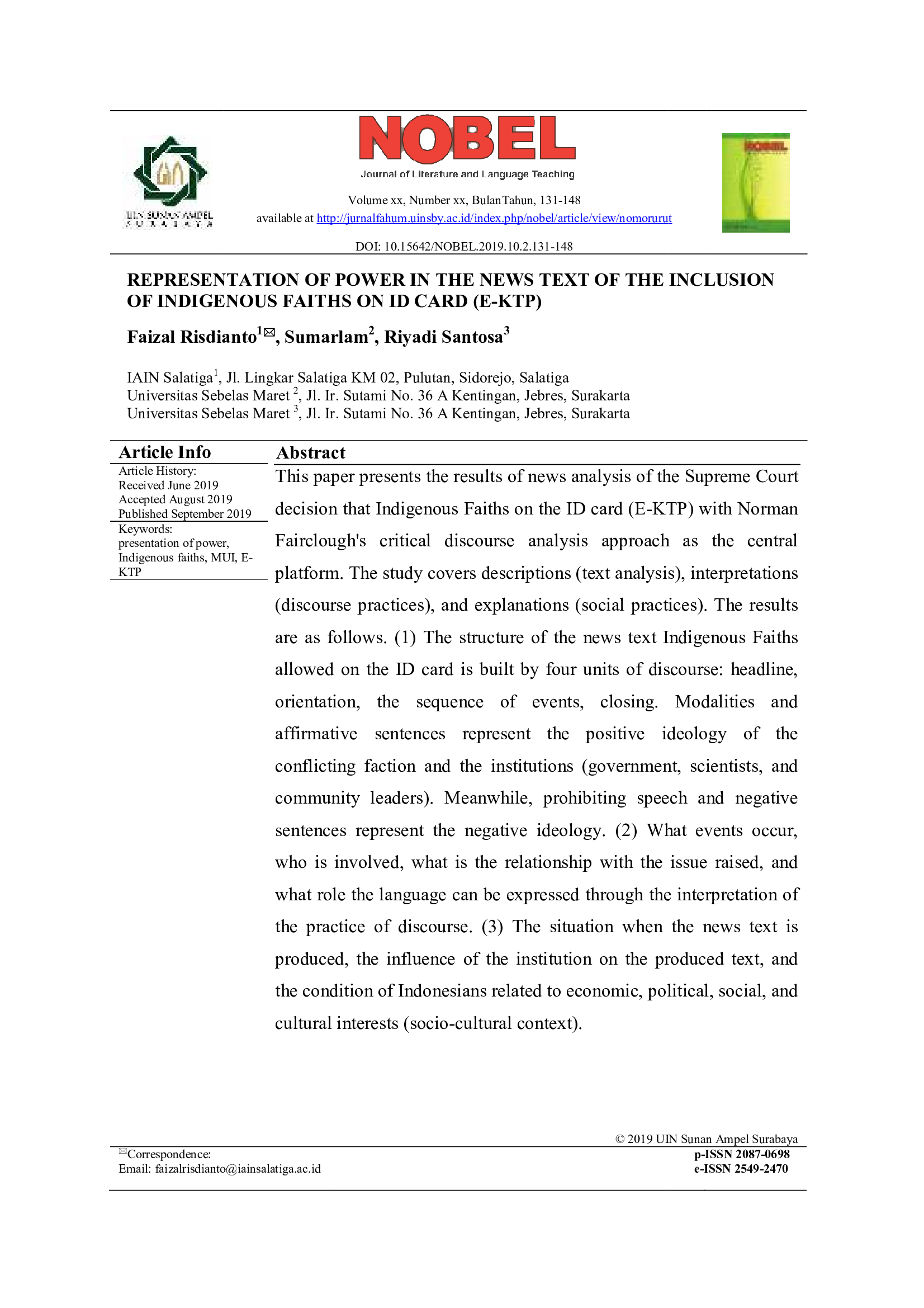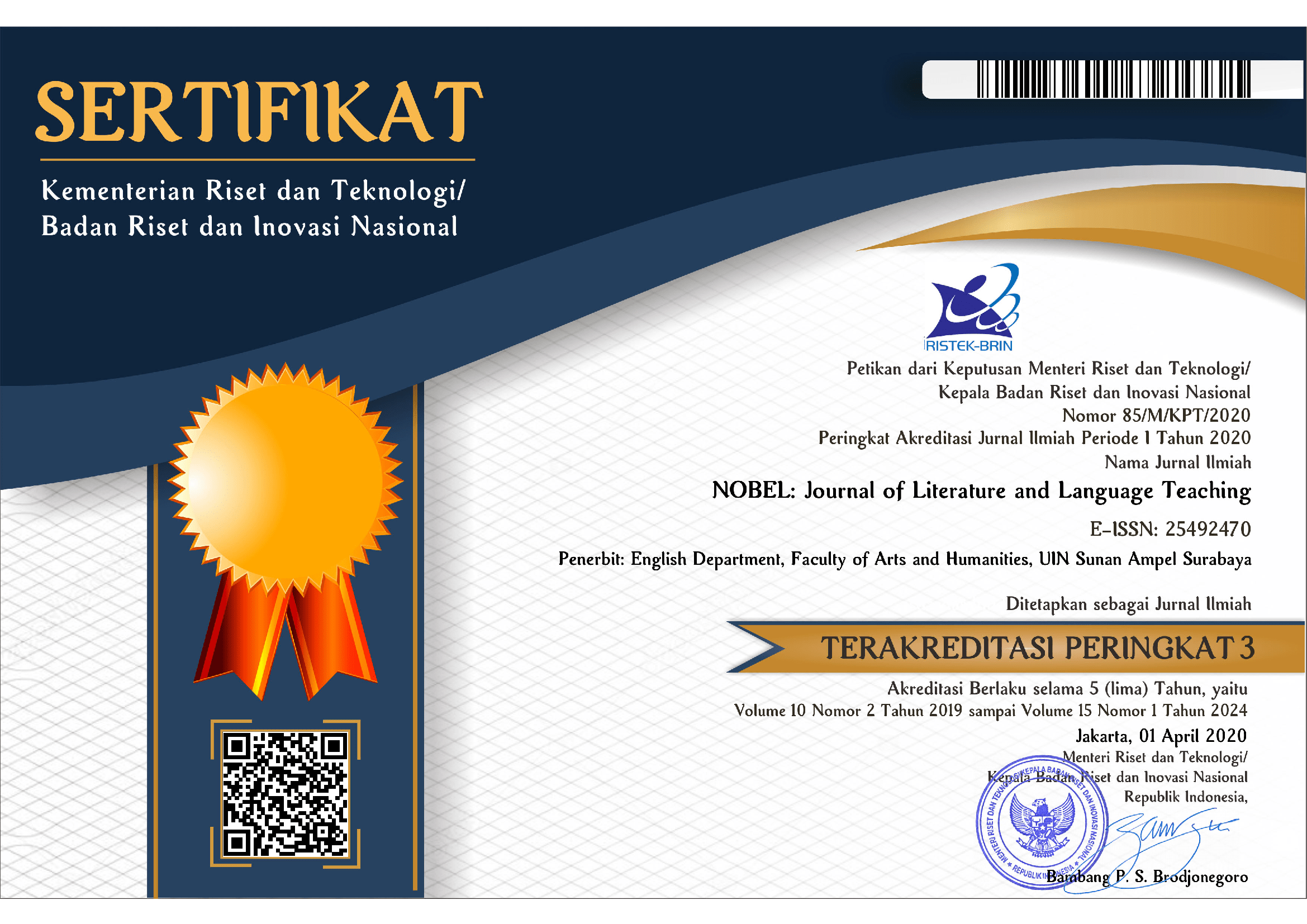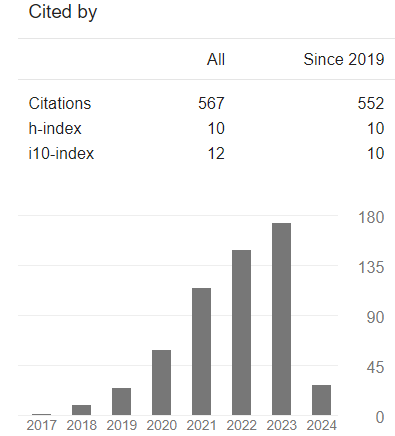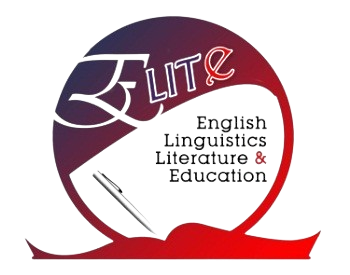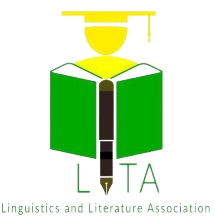Representation of Power in the News Text of the Inclusion of Indigenous Faiths on ID Card (e-KTP)
DOI:
https://doi.org/10.15642/NOBEL.2019.10.2.131-148Keywords:
presentation of power, Indigenous faiths, MUI, E-KTP.Abstract
This paper presents the results of news analysis of the Supreme Court decision that Indigenous Faiths on the ID card (E-KTP) with Norman Fairclough's critical discourse analysis approach as the central platform. The study covers descriptions (text analysis), interpretations (discourse practices), and explanations (social practices). The results are as follows. (1) The structure of the news text Indigenous Faiths allowed on the ID card is built by four units of discourse: headline, orientation, the sequence of events, closing. Modalities and affirmative sentences represent the positive ideology of the conflicting faction and the institutions (government, scientists, and community leaders). Meanwhile, prohibiting speech and negative sentences represent the negative ideology. (2) What events occur, who is involved, what is the relationship with the issue raised, and what role the language can be expressed through the interpretation of the practice of discourse. (3) The situation when the news text is produced, the influence of the institution on the produced text, and the condition of Indonesians related to economic, political, social, and cultural interests (socio-cultural context).
Downloads
References
Badara, A. (2012). Analisis wacana: Teori, metode, dan penerapannya pada wacana media. Jakarta: Kencana Prenada Media Group.
Darma, Y.A. (2009). Analisis wacana kritis. Bandung: Yrama Widya.
Eriyanto. (2001). Analisis wacana: Pengantar analisis Teks media. Yogyakarta: LKiS.
Dijk, T. A. van. (2008). Discourse and power. Retrieved from https://books.google.co.id/books/about/Discourse_and_Power.html?id=NhILAQAAMAAJ&redir_esc=y
Fairclough, N. (1992). Intertextuality in critical discourse analysis. Linguistics and Education. https://doi.org/10.1016/0898-5898(92)90004-G
Fairclough, N. (1995). Critical discourse analysis: The critical study of language. In Longman Group Limited. https://doi.org/10.2307/329335
Fairclough, N. (2005). Discourse analysis in organization studies: The case for critical realism. Organization Studies. https://doi.org/10.1177/0170840605054610
Fauzan, U. (2015). Analisis wacana kritis teks berita Metrotv dan Tvone mengenai “Luapan lumpur sidoarjo.†Retrieved from https://digilib.uns.ac.id/dokumen/detail/44233/Analisis-wacana-kritis-teks-berita-metrotv-dan-tvone-mengenai-Luapan-Lumpur-Sidoarjo
Fauzan, U., Subroto, H. D. E., & Poedjosoedarmo, S. (2014). A CDA of the ideology of Indonesian Metrotv news report. International Journal of Linguistics, 6(4), 71. https://doi.org/10.5296/ijl.v6i4.6147
Halliday, M. A. K. & Matthiessen, C. M. I. M. (2014). An Introduction to Functional Grammar. https://doi.org/10.4324/9780203783771
Öztürk, M., & Yıldırım, A. (2016). English as a foreign language instructors’ cognitions on language learning processes and factors affecting those cognitions. TED EĞİTİM VE BİLİM, 40(182). https://doi.org/10.15390/EB.2015.4776
Sumarlam, (2003). Teori dan praktik analisis wacana. Pustaka Cakra.
Perkins, M. R (1983).Modal expressions in English. Noorwood: Ablex Publishing Corporation.
Rani, A. (2005). Penggunaan bahasa pada wacana iklan televisi (Doctoral Thesis). Program Pascasarjana, Universitas Negeri Malang.
Santoso, A. (2012). Studi bahasa kritis: Menguak bahasa membongkar kuasa. Bandung: Penerbit Mandar Maju.
Sumarlam. (2013). Teori dan praktik analisis wacana. Surakarta: bukuKatta.
Zupnik, J. Y. (1991). Norman fairclough, language and power. London: Longman. 1989 Pp. x + 248. Language in Society, 20(2), 265–269. https://doi.org/10.1017/S0047404500016316
